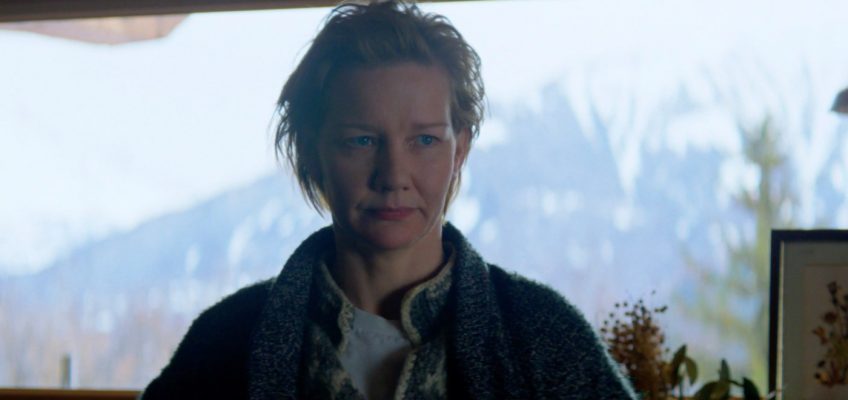A smash hit in France after winning the Palme d’Or, Cannes’ top prize, “Anatomy of a Fall” soars with its fresh approach to the classic courtroom drama.
Like the great 1959 “Anatomy of a Murder,” whose aura this “Anatomy” invokes, what co-writer and director Justine Triet aims to emphasize with her “Anatomy” is ambiguity. In Otto Preminger’s masterpiece the question is not if a jealous husband killed the man accused of raping his wife, it’s “was it really non-consensual?”
“That movie is very important for me. I saw that movie 10 years ago,” Triet, 45, said in a post-screening Q&A at the New York Film Festival. “It’s so modern the way they are playing in the courtroom.”
In “Anatomy of a Fall” the question is whether Sandra (Germany’s Sandra Hüller), a writer, pushed her husband, also a writer, out the window of their Grenoble chalet. Or did he jump?
His dead body is discovered in the snow by his partially blind 9-year-old son who had been out walking their dog.
This “Anatomy,” which is in French and English, begins with Sandra asking a journalist, “What do you want to know?”
But what the actress needed to know — whether Sandra was guilty or not — was something Triet refused to reveal.
“I’m a big fan of working with what is in the script,” Hüller, 45, said. “I know you don’t need more information. But that first sentence is the headline of the film and I didn’t realize that while shooting it.
“But everything I needed to know was there — it was a perfect script. All the complexity of the character was there. All the questions I had that would never be answered. These were questions Justine couldn’t and wouldn’t answer.
“I was dealing with a character who kept her secrets and I made one decision: I would always tell the truth. The sentences I would say would be true. That was the main thing.”
“There are lots of movies like this,” Triet allowed. “So we had to find a way to make our movie.”
Unlike most courtroom dramas where it is in court that truth is discovered, in this court fictions emerge.
That’s true, Triet acknowledged. “At the beginning it was OK that we create something. We were telling a story with doubt and I wanted to remain on the side of ambiguity and ambivalence. I like to watch things that don’t offer a resolution. And the more we know about her, the more opaque she is.
“The trial is like two fictions — and truth is in the middle. But it’s not a faithful truth. So we can’t decide.”
“Anatomy of a Fall” opens Friday


Leave a Reply